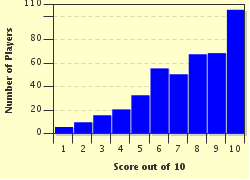Quiz Answer Key and Fun Facts
1. This Doctor of the Church who lived in the fourth century CE left extensive writings, but he is probably best known as the translator who produced the Vulgate Bible, which translated the Hebrew texts into Latin. By what name do we usually refer to him?
2. What is the name of the Japanese monk who wrote 'Tsurezuregusa' (usually translated as 'Essays in Idleness') in the 14th century?
3. 'Sixteen Revelations of Divine Love' was written by an anchoress at the Church of St Julian in Norwich, England in the 14th century. By what name is the author of this work generally known?
4. Charles Weaver's 'The Hermit in English Literature from the Beginnings to 1660' offers discussion of a number of writings by and about hermits, as the title suggests. The book finishes with discussion of writings on the value of a hermit's solitary lifestyle, including 'An Examination of the Advantages of Solitude', written by which German-speaking Swiss author?
5. Which transcendentalist author is possibly best known for the journal he kept recording his thoughts and experiences during two years which he spent living in a cabin near Walden Pond?
6. Which famous resident of Amherst, Massachusetts is best known for her untitled poems which are referred to by their first lines? These include such well-anthologised poems as 'Because I could not stop for Death' and 'Frequently the woods are pink'.
7. The French opus 'A la recherche du temps perdu' has been translated into English with several different titles, including 'In Search of Lost Time' and 'Remembrance of Things Past'. Which author was still working on this seven-volume epic when he died in 1922 following three years spent in the confines of his bedroom?
8. In 1948, an author who would later be known for his reclusive lifestyle published the short story "A Perfect Day for Bananafish" in 'The New Yorker', a magazine in which much of his subsequent work also appeared. Can you catch his name from this information?
9. Which reclusive native of Alabama wrote a book that won a 1961 Pulitzer Prize, and assisted her close friend Truman Capote in the research for his book, 'In Cold Blood'?
10. Which author once described his 1966 novel 'The Crying of Lot 49' as "a short story, but with gland trouble"?
Source: Author
looney_tunes
This quiz was reviewed by FunTrivia editor
agony before going online.
Any errors found in FunTrivia content are routinely corrected through our feedback system.


